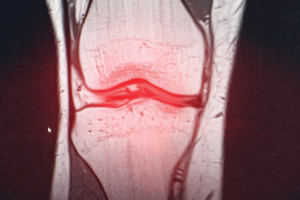 The etiology of psoriatic arthritis (PsA) is poorly understood but current evidence supports an interaction between genetic and environmental factors that coalesce to promote local tissue inflammation.1-3 The pivotal cytokines that underlie the local inflammatory response in a wide range of tissues are interleukin (IL) 23, IL-17 and tumor necrosis factor (TNF).4 The central contribution of these cytokines in the development of synovitis, enthesitis, dactylitis, psoriasis and axial disease is supported by discoveries in preclinical models and molecular studies of peripheral mononuclear blood cells.
The etiology of psoriatic arthritis (PsA) is poorly understood but current evidence supports an interaction between genetic and environmental factors that coalesce to promote local tissue inflammation.1-3 The pivotal cytokines that underlie the local inflammatory response in a wide range of tissues are interleukin (IL) 23, IL-17 and tumor necrosis factor (TNF).4 The central contribution of these cytokines in the development of synovitis, enthesitis, dactylitis, psoriasis and axial disease is supported by discoveries in preclinical models and molecular studies of peripheral mononuclear blood cells.
New Technologies, New Insights
Recent technologies—such as cytometry by time of flight (CyTOF), which uses detection of heavy metals conjugated to cell-specific antibodies, and single-cell RNA sequencing (scRNAseq), based on analysis of RNA expression in single cells—provide new insights into the key effector cell subsets in the skin and synovial fluid responsible for disease initiation and persistence. Moreover, emerging evidence implicates microbial dysbiosis in the development of joint inflammation. In this brief review, we describe these recent discoveries and provide a working model of PsA pathogenesis.
In one model, the critical events that set the stage for onset of PsA arise in the skin. This view is supported by the fact that in the majority of PsA patients, plaque psoriasis precedes onset of joint disease by several years and by the marked parallels in the immune responses present in the skin, joints and entheses.5 The progression from normal skin to the erythematous, well demarcated plaque with overlying scale is triggered by LL-37-driven activation of plasmacytoid dendritic cells (pDC), similar to the inciting events in the pathogenesis of systemic lupus erythematosus.6-8
The stimulation of pDC by the antimicrobial peptide LL-37 promotes the release of interferon-α (IFN-α) followed by the activation of T cells that circulate to the lymph node and return to the dermis where they take on the phenotype of Th1 and type 17 cells in response to interferon-γ (IFN-γ) and IL-23, respectively.9,10 Type 17 CD4+ and CD8+ cells secrete TNF, IL-17 and other cytokines. IL-17 released by T lymphocytes and innate immune cells stimulate the secretion of chemokines, cytokines and antimicrobial peptides by keratinocytes, amplifying the innate and adaptive inflammatory responses in the dermis and epidermis.11
Role of the Gut
In the paradigm outlined above, the inflamed skin is likely the tissue of origin for subsequent arthritis; however, emerging evidence in PsA, rheumatoid arthritis (RA), Crohn’s disease and osteoarthritis support the gut’s vital contribution to musculoskeletal inflammation.12-15 Thus, the origin of musculoskeletal inflammation may arise as a result of intestinal dysbiosis. Indeed, Scher et al. showed a low microbiome diversity in feces of PsA patients that favored local inflammation. Additional studies are underway to identify the immune-mediated pathways activated by the pathogens and bacterial products to induce systemic and joint immunity.16-18


